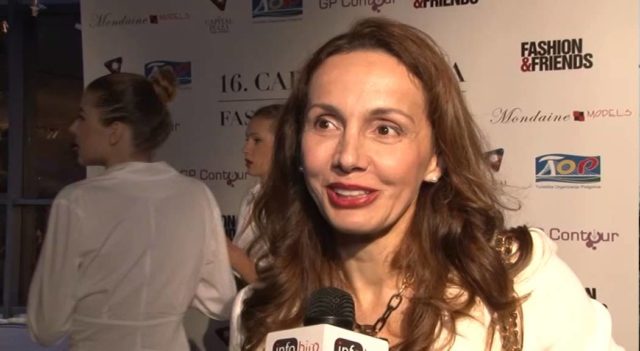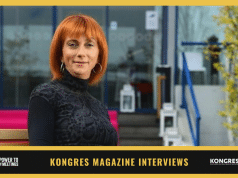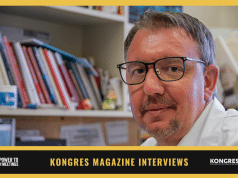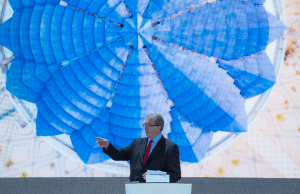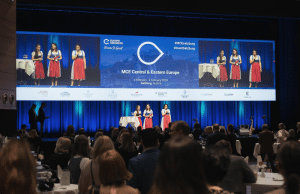Q: What are the main competitive advantages of Podgorica as a congress destination?
Podgorica is the capital and the administrative centre of Montenegro, meaning that the diplomatic sector, along with institutions of public administration, ministries and other government authorities, is located in Podgorica. Of the 600,000 people living in Montenegro 220,000, or a third of the population, live in Podgorica. You can find all of the major hotel brands, such as the Hilton Hotel, AG Hotel from Abu Dhabi, Sheraton and others in Podgorica, altogether offering 2,015 rooms. In 2016 we are expecting three new hotels to open, which will additionally increase the room numbers to around 3,000 – a figure that can definitely satisfy the needs of the business tourism sector.
Q: Compared to Budva, Tivat and Montenegro’s other tourist destinations how well is Podgorica positioned for the people of Monte Negro?
Budva is the summer season centre for leisure tourism, whereas Podgorica is a popular destination no matter the season. In the Podgorica region there are two national parks (Lake Skadar and Lovćen National Park), it is located just 40km away from Budva and from Kolasin, the biggest ski centre in Montenegro. Another advantage is that other tourist destinations don’t have as many rooms as Podgorica does, not to mention the city’s lovely food market, its range of little squares, dynamic night life, luxury shopping zones and much more. Tourist destinations to the northern and the southern ends of Montenegro all lack these particular features. Then there are many famous bar and club brands, such as Hard Rock café and Harley Davidson bar, that have contributed to the visibility of Podgorica, as they are attracting many tourists who come to Podgorica to visit these world renowned places. Just a few years ago Podgorica was considered a transit zone, but lately guests have been deciding to stay for up to three days. This year 33% more guests visited Podgorica compared to the same period last year. The ratio of visitors staying more than one night in Podgorica is 1/7.
Q: What are Podgorica’s strongest assets in terms of the meetings industry or why should an event planner choose Podgorica as a host city for a congress?
By far its strongest asset is accessibility – the flight connections are really good. It also has sufficient hotel capacities that are all categorized with 4* and are equipped in accordance with the requirements of the congress industry. Its central position and close proximity to northern and southern parts of Montenegro allows visitors to take short, one-day trips to discover other Montenegro regions. You can also visit the Lake Skadar National park, which just 10-minutes walk away from the city centre is the biggest lake in the Balkan region. Once you are there you can choose among 36 different natural and cultural attractions, such as ancient churches and monasteries, or you can make a round tour of the lake that will take you about 40 minutes. Then there is an impressive vineyard owned by the “13 Jul Plantaže” company that stretches over 2,310 hectares and is recognised as the biggest vineyard plantation in Europe. The company also has a luxury vine cellar, Šipčanik, covering 7,000m2 and storing wine in wooden vats, amongst them the two most authentic Montenegrin grape varieties – Vranac and Krstić. What is really great about Podgorica is that it is located just one or two, or maybe a maximum of three hours car drive away from completely different locations. For example, it takes you about 30 to 40 minutes drive to reach the Montenegrin coast, the beautiful Herceg Novi, where you can relax and sunbathe, then return to Podgorica afterwards. It is on this kind of basis and along with multiple opportunities for shopping that Podgorica offers highly developed congress tourism facilities. The Porto Montenegro complex situated in the Bay of Kotor is indeed a very attractive destination, it but doesn’t have a high standard shopping area, which is an important part of any tourist offer. In Podgorica, however, you will find George Washington street, where two magnificient shopping malls are located – the Delta City and Capital Plaza – and are filled with shops offering best brands. People here love shopping, as shopping tourism has emerged as a growing component of any travel experience.
Q: With all the efforts put into positioning Podgorica as an interesting congress destination, has the time come to formally open a convention bureau in Podgorica?
Unfortunately, we still haven’t succeeded in forming a convention bureau, but we are fully aware of the importance and the impact it can have on the country’s congress industry sector. Montenegro recently joined NATO and we are waiting to become a member of the EU, when the best opportunity will emerge for Podgorica to get its own Convention Bureau.
Q: Can you state some of the key convention or sporting events happening in Podgorica later in the year?
From June to the end of September Podgorica will be the host of several sports competitions – the World Cup for young water polo players, the Balkan Volleyball Championship, the EU basketball championship for girls, various marathon competitions and a number of other events. This year Podgorica will also be richer for two new swimming pools that it will have and that will attract new sporting events.
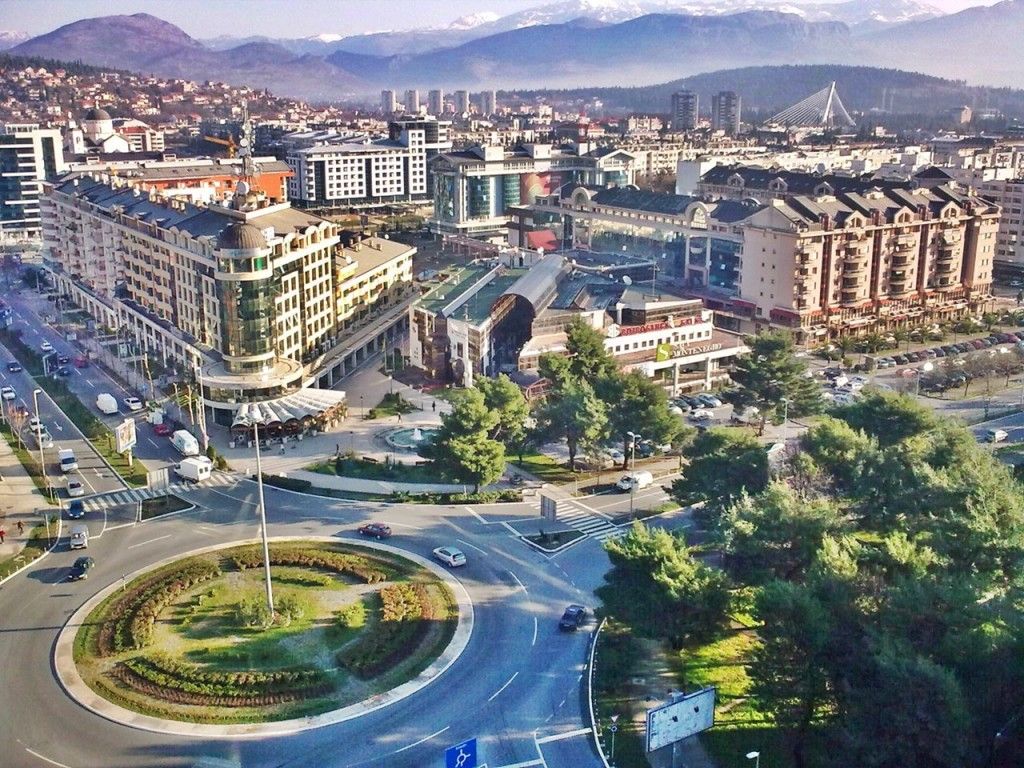
Q: Who do you consider as your biggest competitor in the region? How do you position yourself to deal with the competition?
There are not many big cities in the nearby regions that could be considered as competition to us, apart from Ljubljana, Zagreb, Skopje or Beograd, but they are all too far away. The only possible rivals could be the cities of Dubrovnik and Tirana, which are both situated in near proximity, but they offer a completely different type of tourism. Tirana is a surprising destination; many improvements have been made there in the past, but the high standard tourist services are still in development, so we don’t consider them as real competition. Montenegro is also special because it is already a destination in itself. It is small and enables fast access to any other destination you wish to visit in the country.
Q: Avio destination Podgorica has recently gained quite a few new international airline connections.How do you think Podgorica is developed as an avio destination?
Podgorica has good air connections – we recently established some new flight connections and we offer low cost flights with companies like Air Berlin. Alitalia also provide regular flights from Podgorica…but much remains to be done in this field and there is always the possibility to improve.
Flights connecting Podgorica with Paris, Munich, Frankfurt and Zürich are crucial, but it is necessary to further extend the offer. I just visited Sweden a few weeks ago, where people are very interested in visiting Montenegro. Mostly they are looking for a peaceful holiday during the low season in May and September, to spend time in nature, hiking, biking, visiting national parks… They were asking me if there is a direct flight from Podgorica to Oslo and I remembered that there is a regular flight connection between Oslo and Tivat, but it will be abolished in October, although I think it should be kept regularly throughout the whole year.
Q: From a marketing perspective what do you think works best in promoting congress activities in Podgorica? If Podgorica was formerly mostly known as a transit city, what do you think needs to be done to raise its visibility as a congress destination?
I think our main goal is to establish an efficient and effective promotion system. With the right promotional tools and materials we will succeed in raising the visibility of Podgorica, which is a very interesting destination. The Podgorica area has many attractions, especially panoramic tours in nature for hiking and biking. There are many national parks in the vicinity of Podgorica, among them the highest mountain range in Montenegro – the Komovi mountain. There are two glacial lakes with unique animal species in it and between the already mentioned tourist attractions of lake Skadar and the vineyard plantation there is a narrow canyon of the Cijevna river, with clear water, intact nature, an ornithological reserve and waterfalls, which will undoubtedly impress every visitor.
Q: It seems that you are having a few problems with the infrastructure and if, for example, we take MICE tourism, it operates on the basis of full support from several tourist organisations, such as hoteliers, DMCs, incentive travel agents etc. who all work on developing programmes for incentive trips, events and special industry venues etc. How well are the above stated organisations collaborating with each other in Podgorica?
In Podgorica we don’t have many incoming travel agencies. Our agencies are more focused on outbound tourism. Agencies like Adriatic, Globtour and Talas are some of the rare agencies that are engaged in incoming tourism. We have a big problem in this particular domain. It is much easier to work on outbound tourism programmes. Our tourist organisation worked very hard for the past five years on promoting and organising events and shows, taking great care in coordinating them all so that they didn’t overlap with each other. We don’t engage ourselves in creating tourist programmes; we only help with the realisation of them. Our agencies are now offering new tourist programmes that are not yet showing the desired results. This is mainly because the programmes are still in the process of development, but we are proud to say that the Grand Travel tourist agency from Podgorica, which has just recently started working, is showing some great results after we helped them with our suggestions on how to improve their offer, how to connect with others, etc.
Q: What are your expectations for 2016?
In the pre-season we already received more reservations in comparison with the same season last year and most of the hotel capacities are already booked for the main season. We have very good expectations and I think this year we will have a record number of hotel room nights.
[pullquote]”There are not many big cities in the nearby regions that could be considered as competition to us, apart from Ljubljana, Zagreb, Skopje or Beograd, but they are all too far away. The only possible rivals could be the cities of Dubrovnik and Tirana.”[/pullquote]
Q: Which is your personally favourite place for organising a congress/event?
To this day we have organised events mainly in the Šipčanik wine cellar – this is a perfect place to organise cultural and business events. For the Ministry of Agriculture we organised round tables in the cellar, which offers an amazing ambience. Of course the delegates were accommodated in hotels, but during the day they attended the workshops in the cellar. The cellar owner, the “13 Jul Plantaže” company, has made a proper business of organising individual and group wine tastings, serving it with cheese and prosciuto. They have developed an exquisite wine industry and they excel in wine production in the region. It is a special venue that also has a swimming pool. It is a unique facility on a global scale and equipped with high technology equipment, making it well worth visiting.
Q: What would you propose as an activity for an incentive programme?
In the heart of the city we have the river Moraća, where you can indulge yourself in some refreshing canoeing activities, as you can rent kayaks at two kayak clubs located near the river. The you can also take a walk on the Gorica city hill – the lung of the city of Podgorica, where several paths lead you through the woods of the hill. There you will encounter the oldest Partisan monument and a 13th century church, the oldest in the city. There are many interesting things to do in the city centre that you can discover throuhg sightseeing – there is the Old wine cellar (Duklje), an old roman archeological site located about 3km form Podgorica and there is Medun, a medieval fortress and a memorial museum. Podgorica is also known for its nightlife and there is a renowned street with many old pubs and bars that have their own special names and distinctive charm – it’s interesting to see and experience this too.
Q: What do you think about regional cooperation?
This is a mandatory element of our work and as a tourist organisation we are working intensively to connect with all the other major cities and their respective tourist centres to create joint offers to a wider market. We started collaborating with tourist organisations from Ljubljana, Zagreb, Beograd, Skopje, Tirana and even with Sofia, with which we made connections via a tourist organisation from Beograd. Together we present ourselves at bigger markets.
Q: Would you like to add anything else and do you have a final message to our readers?
I would just like to add that fewer people are interested in archaeological sites and comprehensive, serious stories. Most of them are tired after a long day’s work and would like to drink a glass of wine and get a taste of some fine dishes, so I think we should work harder on putting more emphasis on local cuisine and traditional culinary products like Montenegro’s traditional cake – patišpan – which dates back to the beginning of our nation. If the cake wasn’t served on the table during a typical family gathering, the table was incomplete. This is a typical cake very popular in this area, but that is totally ignored. The patisseries in general offer desserts like tiramisu, cheese cake and similar, but not patišpan. To achieve greater visibility we organised a day of patišpan at the city market, where women dressed in Montenegro’s traditional clothing were offering visitors a taste of patišpan in order to revitalize local culinary specialities. Patišpan is something you won’t get in Paris, Milan or London, as all these destinations have their own typical dessert; in France it is the croissant, in Italy tiramisu. So, Patišpan is a completely unique specialty of Montenegro and Podgorica. Try it!


